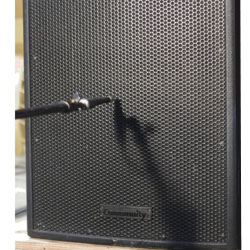
Dynamic Amplitude Control
In addition to utilizing the high-pass and low-pass filters that we’ve discussed above, most modern DSP devices can be adjusted in fine increments to provide one (or more) types of amplitude compression and/or limiting, thereby providing the user with an additional means of protecting their loudspeakers from abusive conditions.
While on paper this looks promising, the truth is that it’s extremely difficult to set the thresholds, time constants (attack and release), and the gain-reduction ratios.
You can try to relate an amplifier’s maximum output voltage to your driver’s power handling capability based solely on numbers; however, this involves numerous complexities that go far beyond the scope of this article.
Given the many topologies of today’s modern power amplifiers (i.e., Class A, Class A/B, Class H, Class D, Hybrid Class D, and so on), it would be challenging indeed to relate the various time constants that a specific manufacturer used to state the measured power output of a given amplifier – to the stated power handling of a given driver.
In short, today’s amplifiers may behave very, very differently from one another when their burst power, short-term power, mid-term power, and steady-state long-term power capabilities are carefully measured.
A few loudspeaker manufacturers have conscientiously addressed these issues by developing their protection schemes through extensive empirical work, such as destruction testing of many drivers. In the final analysis, you’ve got to crack a few eggs (at least!), in order to arrive at protection parameters that are neither too loose nor too tight, under the wide range of usages that a general purpose system might encounter.
The simplest advice is to use DSP limiter functions to keep amplifiers out of clipping (at least most of the time), and avoid any obvious transition points in the applied power level that will cause the system to bottom out, become obviously distorted, or otherwise generate unpleasant audible artifacts.
For long-term driver protection, it can be useful to simply set a long-term limiter (if your DSP be so equipped), to an arbitrary -3 dB gain reduction when driven to a high percentage of its stated maximum level for a long enough period of time (>30 minutes or longer is a good rule of thumb). While grossly imprecise when compared to the methodical destructive testing of a batch of drivers, it’s at least a starting point.
Moving To The High End
At the opposite end of the spectrum – high frequencies – it makes nothing but good sense to look at the HF response of the horn and driver combination on a high-resolution spectrum analyzer, and then sharply roll-off the energy that’s feeding the compression driver as it enters its break-up mode.
Here, a 24 dB/octave (or higher) low-pass filter will be a good choice. While the filter will introduce some phase shift in the upper end of the audible spectrum, the driver has already deviated from a flat phase response as it transitions from its pistonic mode to its breakup mode. (For more about this, see Harnessing The Power Of Digital Signal Processing.)
Implementing a high-pass filter just before HF driver break-up actually reduces HF distortion. This is because the energy that’s emitting from the driver above its breakup frequency consists mainly of harmonic distortion – and worse – non-harmonically related distortion (almost like bees buzzing), neither of which is desirable for accurate sonic reproduction.
